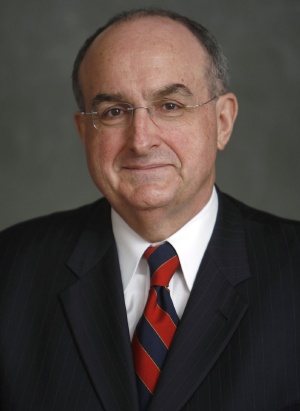Jun 20 2008
Indiana University and Purdue University announced Thursday (June 19) that they will jointly ask the 2009 General Assembly to create a broad-based research alliance to help the state grow its bio- and life-sciences industries, improve public health and increase the number of physicians being trained in Indiana.
 Michael McRobbie (Courtesy of Indiana University.)
Michael McRobbie (Courtesy of Indiana University.)
The plan, which must be approved by both universities' boards of trustees, will be reviewed by the trustees in meetings today and Friday.
The Indiana Innovation Alliance would be led by Purdue and IU and would bring together a wide spectrum of businesses, government and universities to share research facilities and other resources that could expand the state's capacity to support new and existing companies in biology and health-related fields.
The alliance would focus on research with applications in business, including the potential to create new companies, medical and health-related fields, pharmaceuticals, bio-energy and bio-fuels, nanotechnology, health-care delivery and the environment. Research also would be directed toward improving the overall health of the state. Indiana public health ranks among the lowest of the 50 states, a statistic that is costly to businesses and a drain on economic development.
The universities are proposing that the legislature create the alliance by appropriating $35 million in each of the upcoming fiscal year 2009-2011 state biennial budgets. The funding would include $5 million each year to expand the capacity of the IU School of Medicine to educate physicians.
The increase would support the School of Medicine's plan to increase medical student enrollment by 30 percent over a six-year period and expand programs from two to four years at its eight regional centers for medical education.
Currently, medical students attend their first two years of classes at Indianapolis or one of the regional campuses, and then complete their remaining two years at Indianapolis. The medical school expansion is designed to meet an expected shortage of physicians looming in the next decade and to promote the opening of new physician practices in medically underserved areas.
The boards of trustees at both universities will be asked to approve the concept for the Indiana Innovation Alliance at their meetings Thursday and Friday (6/19-6/20). Purdue's trustees will meet in West Lafayette. IU's trustees will be in South Bend. Administrators at both universities plan to bring a detailed proposal to trustees at their September meetings.
"This is a unique and unprecedented concept that harnesses all the strengths of Indiana's two major research universities and directs their efforts in a coordinated way toward the state's key educational and economic development goals," said Indiana University President Michael A. McRobbie. "The more we cooperate and collaborate, the more success we will achieve in these important goals. This represents a significant step forward for the state of Indiana. It means we will be able to marshal the resources and capacity we need to be competitive with the nation's top tier of life science research centers. "
Purdue President France A. Córdova said: "Indiana can and should become a national leader in the health- and biology-based fields. With this alliance, we are asking our state to put its commitment and competitiveness on the line just as our capital city did when it resolved to become a major sports hub.
"We have the tools we need. The strengths of Purdue and IU in the sciences, engineering, business and the medically related disciplines are formidable. If we concentrate those strengths on building the state's economy, the world will notice, and the end result will be a stronger economy, better jobs for Hoosiers and healthier people. We should not be afraid to reach for the stars."
Under the Indiana Innovation Alliance, Purdue and IU will together develop and share research and facilities, both within the academic institutions and with industry collaborators. The alliance would provide matching funds for research projects focused on health and bio-based economic development or public health. The universities also will work together to expand medical education across the state and to launch partnerships with businesses, industry and organizations.
Other expected outcomes from the alliance include:
- Increased funding for research and development, bringing new funds into Indiana.
- Attracting and retaining academic and commercial researchers, innovators and entrepreneurs.
- Increasing the number of health-care professionals statewide.
- Reducing the health-care spending growth rate by companies and organizations.
"The cost of health care benefits is a very significant factor when companies make decisions about where to locate their operations," said Victor L. Lechtenberg, vice provost for engagement at Purdue. "Right now, Indiana is at a disadvantage, because we have a negative reputation that is backed up by statistics. For example, our rates of obesity, diabetes and smoking are above average. The alliance will address these and other health factors, including nutrition and the healthcare infrastructure where there are significant opportunities for cost reduction."
William B. Stephan, IU's vice president for engagement, commented: "If this effort succeeds in creating the research partnerships and matching fund opportunities envisioned by the alliance proposal, I believe we will see a significant economic impact in a short time and -- even more importantly -- sustained growth in an economic sector that is very promising for Indiana."
Together, IU and Purdue are home to internationally recognized programs in business and management, engineering, pharmacy, agriculture, veterinary medicine, biology and virology, chemistry, cancer biology, neuroscience, psychology, medical sociology, genetics, genomics, informatics, information technology, imaging, and cardiovascular and metabolic disease research.